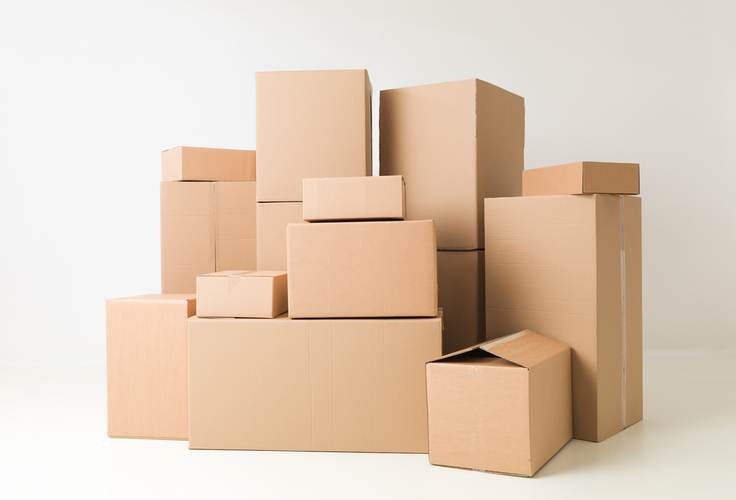Most people outside the packaging industry use the words “corrugated” and “cardboard” interchangeably. In reality, they are two different materials. In some cases, cardboard and corrugated can be used for similar packaging applications. For the most part, though, one or the other will be clearly the best choice.
In this post, we will review the difference between corrugated and cardboard, to help you select the best-performing and lowest-cost material for your application.
Corrugated and Cardboard Construction
If you look closely at a piece of corrugated board or a corrugated box, you’ll notice it probably has a layer of flat linerboard, a layer of wavy (fluted) paper, and another layer of flat linerboard. This material, double wall corrugated, is the usual construction of corrugated boxes and sheets. Although, more layers can be added to create triple wall corrugated board and yet thicker board for extra-heavy-duty applications. The thickness of each layer can also be increased or decreased to make the corrugated material relatively stronger or weaker.
Cardboard is a generic term to describe single-layer, rigid paper materials used for various packaging applications. The most recognizable type of cardboard is chipboard, which is the type of cardboard you find on the back of a pad of paper. Cardboard can be manufactured in a wide range of thicknesses and strengths. Cardboard can also be coated to provide moisture protection, meet FDA requirements for direct contact with food, and many other purposes.
The Difference Between Cardboard and Corrugated in Packaging Characteristics
Generally speaking, here is how the two materials line up against each other:
- Durability: Corrugated and chipboard have comparable levels of puncture resistance, but will vary depending on the construction of the specific products being compared. In general, standard-quality corrugated is more durable than standard grades of cardboard.
- Weight: Cardboard is lighter, which is advantageous for reducing shipping costs.
- Cost-effectiveness: For applications where cardboard and corrugated are good options, cardboard is likely to be less expensive. However, the quantity of material ordered, size and other factors may change the equation.
- Environmental impact: Most corrugated shipping containers have high recycled content and, in some cases, 100% post-consumer recycled content. Most general-purpose cardboard has high or 100% recycled content, as well. For special applications, non-recycled paper content will be higher. Cardboard and corrugated are easy to recycle, provided they do not have some type of non-recyclable coating material, which is rare.
- Applications: In industrial packaging, corrugated and cardboard are often used for boxes and interleaving sheets. Factors to consider for box applications are discussed below. For interleaving, the choice between corrugated and cardboard depends on the necessary rigidity and strength needed for the application.
The Difference Between a Corrugated and Non-Corrugated Box
Looking at corrugated and cardboard boxes specifically, there are important differences to keep in mind.
Corrugated material has much greater stacking strength, rigidity and overall durability than cardboard — making it the best choice for shipping boxes.
Cardboard can be used for parcel shipping, but it is more common to use cardboard for primary product packaging such as cereal boxes, cosmetics — and many, many others. Cardboard beats corrugated for primary packaging because of its more precise foldability, clean appearance, excellent printability, design flexibility, cost and other factors.
If you are shipping extremely lightweight products or small boxes, cardboard may have enough strength to serve as a shipping container, in which case you may be able to save money. For primary packaging, we see some companies opt for corrugated, despite the advantages of carboard noted earlier. Often, the reason for choosing corrugated is its strong message of environmental responsibility.
Not Sure Which Is Best?
If you are torn between corrugated and chipboard, we can assist. GWC Packaging provides a wide range of packaging solutions — from corrugated containers to packaging machinery. To learn more or get help in making a product selection, please contact us now.
